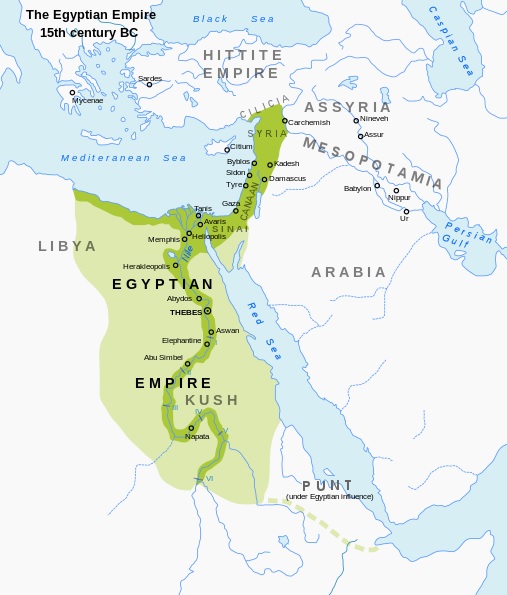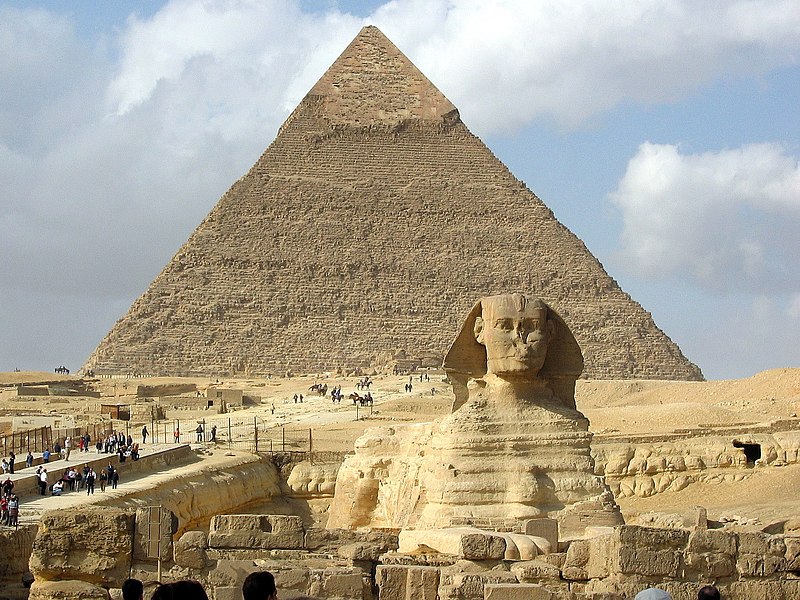Ancient Egypt
Ancient Egypt (from Ancient Greek Αἴγυπτος and Latin Aegyptus), self-designated Ta-Kemet, Ta-Meri, Ta-Wi, and others (transliterated as tA-kmt, tA-mrj, tA-wy), Kemi (Coptic Ⲭⲏⲙⲓ) - is the name of a historical region and culture of a significant civilization of the Ancient World, which existed in northeast Africa along the lower course of the Nile River. The history of Ancient Egypt spans approximately 40 centuries and is divided by researchers into the predynastic period, the dynastic period, the Hellenistic period, and the Roman period.
The temporal boundaries of the ancient Egyptian culture, as accepted by researchers, cover the period from the middle of the 4th millennium BCE to the 4th century CE. The Byzantine-Coptic period (as part of the Eastern Roman Empire), although already belonging to the early Middle Ages, is sometimes also considered within the framework of the study of Ancient Egypt. The temporal boundaries begin in the 4th century and end with the Arab conquest in the 7th century.

The rise of ancient Egyptian civilization was largely the result of its ability to adapt to the conditions of the river valley and delta of the Nile. Regular annual floods, which fertilized the soil with fertile silt, as well as the organization of an irrigation system for agriculture, allowed for the abundant production of grain crops, providing for social and cultural development. The concentration of human and material resources in the hands of the administration contributed to the creation and maintenance of a complex network of canals, the emergence of a regular army, and the expansion of trade. With the gradual development of mining, land surveying, and construction technologies, it became possible to organize collective construction of monumental structures. The driving and organizing force in Ancient Egypt was a well-developed state apparatus consisting of priests, scribes, and administrators headed by the pharaoh, who often became deified within a complex system of religious beliefs with an elaborate cult of funerary rituals.
Ancient Egypt left a vast cultural heritage for world civilization. Its works of art were exported to various parts of the world even in ancient times and were widely copied by craftsmen from other countries. Unique architectural forms, such as majestic pyramids, temples, palaces, and obelisks, inspired travelers and explorers for many centuries. Egyptian craftsmen created beautiful wall paintings and statues, mastered the production of glass and faience, and poets and writers developed new forms in literature. Among the scientific achievements of the ancient Egyptians were the creation of an original writing system, mathematics, practical medicine, astronomical observations, and the calendar based on them.

In 332 BCE, the army of Alexander the Great entered ancient Egypt, and Ancient Egypt became part of his empire. After the division of Alexander's empire among the Diadochi, Ancient Egypt fell to the general Ptolemy I, the founder of the Ptolemaic dynasty of Hellenistic Egypt (305-30 BCE). The capital became the city of Alexandria. Under the Ptolemies, ancient Egypt became the main supplier of grain in the Hellenistic world. During this period, the Egyptian fleet dominated the Mediterranean Sea. In the reign of Queen Cleopatra, the last of the Ptolemaic dynasty, Ancient Egypt became entangled in the political struggle in Ancient Rome. After the defeat of the Egyptian fleet at the Battle of Actium in 31 BCE, the suicide of Cleopatra VII, and the death of Mark Antony, Egypt was transformed into a Roman province (30 BCE).
Related topics
Antiquity, Ancient Greece, Rome, Mark Antony
Literature
- Avdiev, V. I. Military History of Ancient Egypt: 2 volumes. Moscow: Soviet Science, 1948-1959.
- Alexandrov, B. E., & Bolshakov, A. O. Image and Text: Two Languages of Ancient Egyptian Culture. Vestnik Drevnei Istorii, No. 4, 2003, pp. 3-20.
- Aldred, Cyril. The Egyptians: Builders of the Pyramids. Moscow: Centerpoligraph, 2004. (Mysteries of Ancient Civilizations). ISBN 5-9524-1267-X.
- Assmann, J. Egypt: Theology and Piety in Early Civilization. Moscow: Pristsels, 1999. ISBN 5-85324-058-7.


